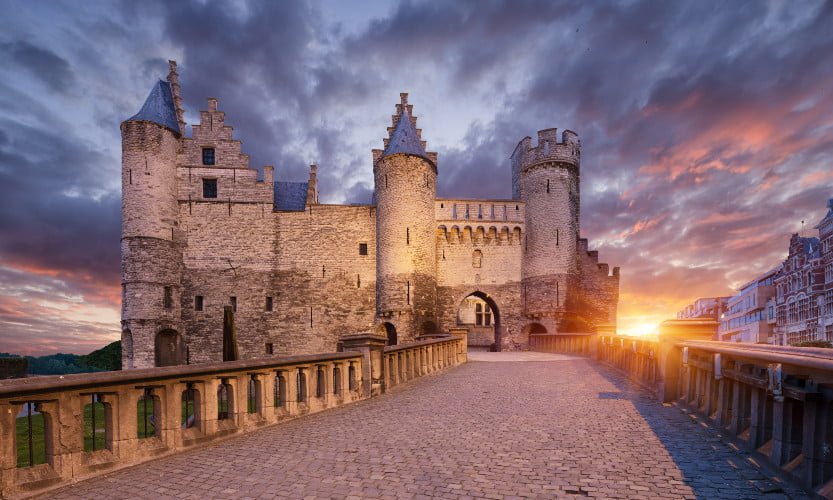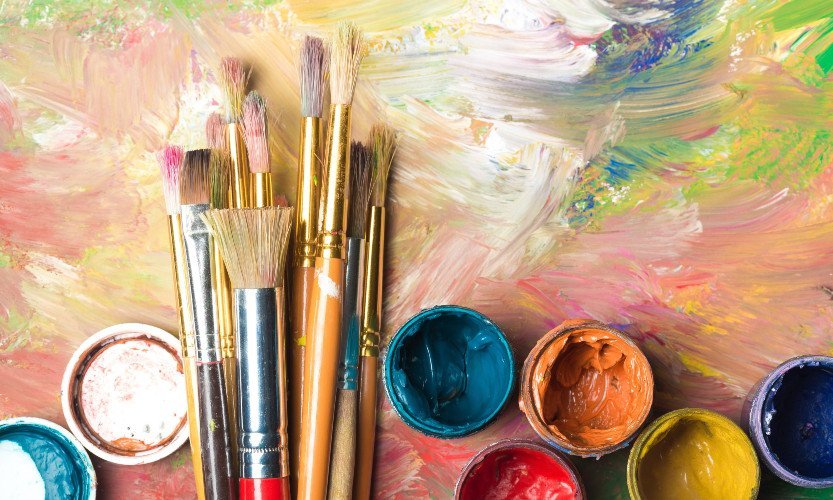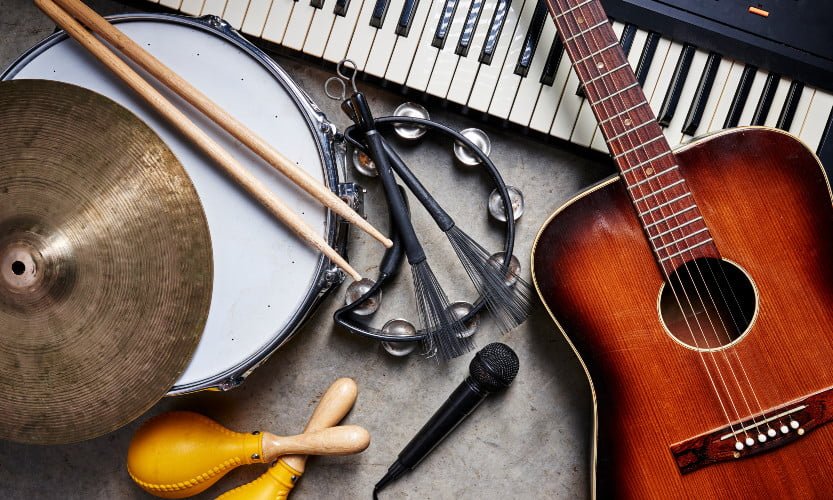So, you have decided you want to write a nonfiction book, but what’s next?
While some readers may lump all nonfiction books into one category, authors should understand there are numerous genres that nonfiction falls into. Nonfiction genres are not one-size-fits-all and determining which area your book belongs is important when pitching, selling and promoting!
In this article, I will be walking you through these various genres along with nonfiction examples to help you correctly label your book.
What Is Nonfiction?
Nonfiction is any literary work that is fact-based, intended to present true events and information as accurately as possible. Fiction, on the other hand, refers to narratives that are drawn from the imagination.
Nonfiction books focus on what is real. While narrative nonfiction is presented as a story versus expository nonfiction being more explanatory, both are still devoted to informing readers of the facts. These include books such as, Becoming by Michelle Obama, How to Win Friends and Influence People by Dale Carnegie, The Diary of Anne Frank by Anne Frank and I Know Why the Caged Bird Sings by Maya Angelou.
Narrative nonfiction is also sometimes referred to as creative nonfiction. Writing a book of any kind is a form of creative writing as it requires you to write in as skilfully and engaging a manner as you can while also utilising and experimenting with form. While traditional nonfiction (textbooks, instruction manuals etc) must be laid out in a specific way and written in a certain tone, this is certainly not the case for all, or even most, nonfiction writing.
Nonfiction Genres List
Every author knows that making an outline before writing sets the blueprint for your book. But before you can get to that stage, you need to identify your target audience. Determining which genre of nonfiction your book best fits into is the guiding principle you should begin with.
For example, if you choose to write historical nonfiction your audience, word count, and formatting will be completely different than for an academic text. Understanding and selecting the best nonfiction genre is crucial to success.
Let’s look at the most popular genres in nonfiction…
History
History nonfiction writing involves recounting a historical event or specific time period. While authors can frame how the information is presented, all information presented in history nonfiction must be verifiable, factual, and historically accurate.
An example of a popular historical nonfiction book is Midnight in Chernobyl by Adam Higginbotham. The work presents the story of the nuclear accident at the Chernobyl Nuclear Power Plant in Ukraine in April 1986.

Biographies And Autobiographies
Both biographies and autobiographies focus on retelling a life story, but the two genres are different. Autobiographies are written about and by the author. Biographies are third-person narratives, where the author tells someone else’s story (while still remaining accurate and factual). Unlike autobiographies, the subject of the story can be living or dead when writing biographies.
One of the most famous autobiographies is Long Walk to Freedom by Nelson Mandela.
Make this the year you finish your novel with our Ultimate Novel Writing Course
A One Year Course
Running April 2023 – March 2024.
One-to-One Mentoring
Transform your draft into a publishable manuscript with monthly feedback from renowned authors.
In Partnership with Peters Fraser + Dunlop
Get your work seen by top literary agents, and benefit from our years of experience and industry contacts.
Memoirs
A memoir tells readers about significant moments in the life of the author. Memoirs are sometimes confused with autobiographies since they are both written from the same perspective. However, what differentiates the two is that memoirs may be written about a shorter period of time, such as a specific event or experience in the writer’s life.
Examples of memoirs include The Storyteller: Tales of Life and Music by Dave Grohl and The Argonauts by Maggie Nelson.
Travel Writing
Travel writing is a nonfiction genre with several of its own subgenres. Travelogues are sometimes called travel memoirs, where the author discusses personal travel experiences. Travel guides are another form of travel nonfiction, providing information about destinations and reviews.
Eat Pray Love by Elizabeth Gilbert is one of the most well-known travel memoirs, with a critically acclaimed film adaptation. A Cook’s Tour: In Search of the Perfect Meal by Anthony Bourdain, is another great example, focusing on the late Bourdain’s travels across the globe and culinary experiences.
When it comes to travel guides, Arthur Frommer, Eugene Fodor, and Rick Steves are some of the most recognised travel writers.
Philosophy
Philosophy nonfiction includes exploring topics like the purpose of life, ethics, and a deeper understanding of humanity. Though the names of traditional philosophers such as Aristotle, Confucius, Plato, and Voltaire might first come to mind, modern writers are changing the landscape.
Now, more than ever, the philosophy genre is becoming more accessible, and writers are making their books more digestible to a wider audience.
Philosopher Bertrand Russell has written several books in this genre, with The Problems of Philosophy providing a brief glimpse into some of the deepest philosophical questions. What Does It All Mean? A Very Short Introduction to Philosophy by Thomas Nagel, is another accessible option that is meant for beginners.
Religion And Spirituality
The religion and spirituality genres are just as broad as the concepts themselves. Authors can choose to write from first-hand experience or focus on teaching about a specific practice. It is also possible to have them as a subgenre, such as self-help books, helping readers on their spiritual journey.
Theology, focusing on the systematic study of God and religion, can also fall into this category.
A best-selling book in this category is Mere Christianity by C.S. Lewis, where the famous author discusses Christian beliefs and addresses criticisms based on philosophy.

Self-Help
The self-help genre is surprisingly (or perhaps not!) one of the most popular categories in nonfiction. Here, authors can teach readers anything from new skills, how to manage finance, maintaining happiness, and even parenting or starting a new business.
Feeding the Soul (Because It’s My Business): Finding Our Way to Joy, Love, and Freedom by Tabitha Brown teaches lessons in hope, while Rich Dad, Poor Dad by Robert T. Kiyosaki is a classic personal finance book.
Science
Writing about science clearly falls into the nonfiction category, as it is grounded in observation and evidence (not to be confused with science fiction). When writing science nonfiction, authors are required to include reputable references throughout their text and ensure that all studies are thoroughly fact-checked.
These books may be a compilation of complex academic research, or they may be condensed and distilled into easier-to-read literary works. The Cosmic Machine: The Science That Runs Our Universe and the Story Behind It by Scott Bembenek is a great example of a book simplifying complex scientific topics for readers. On the other hand, a book that has shaped scientific literature throughout the centuries would be Charles Darwin’s On the Origin of Species.
Medical
The medical genre of nonfiction writing includes books about healthcare, technology, and patient care systems. Another broad genre, authors can write about mental health, clinical conditions, well-being, nutrition, and more. Medical books can also be instructive in nature, highlighting terminology or serving as study guides to medical professionals.
Anthony William’s Medical Medium series is an excellent example of just how much this genre can encompass.
Psychology
Psychology nonfiction books serve a wide range of purposes. Some are more clinical in nature, while others may fall in the self-help category. Authors can help readers understand how the brain works, improve memory function, or even assist with relationship building.
An interesting example is The Man Who Mistook His Wife for a Hat and Other Clinical Tales by Oliver Sacks. The book consists of various cases studies from Sack’s patients that highlight different brain functions.
Art
The art genre of nonfiction writing largely falls into two categories—writing about actual art, and guiding people on how to create art.
For example, a person interested in learning about various artists and their work might read Artists: Their Lives and Works by Ross King. A reader interested in drawing could consider How to Draw Cool Stuff: A Drawing Guide for Teachers and Students by Catherine V Holmes.

Crafting
Craft writing teaches readers how to make decorative items by hand. Craft books provide instructions on how to execute these projects and can cover everything from paper flowers to knitting.
For example, The Unofficial Book of Cricut Crafts: The Ultimate Guide to Your Electric Cutting Machine by Crystal Allen is very niche, whereas Low-Mess Crafts for Kids: 72 Projects to Create Your Own Magical Worlds by Debbie Chapman targets a much broader market.
DIY
Do-It-Yourself is another popular nonfiction genre. These books guide people in everything from home plumbing to car maintenance. How to make homemade beauty and haircare products are also popular topics, along with gardening and woodworking.
40 Projects for Building Your Backyard Homestead by David Toht teaches readers how to make chicken coops, sheds, fences, and also covers gardening. The Martha Manual: How to Do (Almost) Everything by Martha Stewart is a more complete DIY manual that covers a wide range of projects.
Photography
The photography genre is one of the most popular nonfiction coffee table genres, and is highly influential. Photography books capture moments throughout history in real-time through photographic collections. These may also be instruction books teaching people how to shoot photography.
Digital Photography Complete Course: Learn Everything You Need to Know in 20 Weeks by David Taylor is an instructional book, while Photography: The Definitive Visual History by Tom Ang showcases photographs and more.
Gardening
Popular nonfiction genres include gardening and plant care.
Authors can focus on a particular type of gardening, such as in Vegetable Gardening for Beginners: A Simple Guide to Growing Vegetables at Home by Jill McSheehy. Or the topics can be more general, such as The Complete Gardener’s Guide: The One-Stop Guide to Plan, Sow, Plant, and Grow Your Garden by DK.
Food, Drink & Cooking
Cuisine is another popular nonfiction genre. Whether you want to write recipes, reviews, or restaurant guidebooks, there are quite a few options with this genre.
An example of a recipe book would be Tieghan Gerard’s book (with a very long title), Half Baked Harvest Super Simple: More Than 125 Recipes for Instant, Overnight, Meal-Prepped, and Easy Comfort Foods: A Cookbook. Whereas Eat Better, Feel Better: My Recipes for Wellness and Healing, Inside and Out by Giada De Laurentiis combines recipes with personal stories.

Computers And Software
The computers and software genre is quite comprehensive – just think of all the technology we use every day. These books may be about specific software tools such as Microsoft Office or on programming languages such as Java and Python.
For example, Upgrading and Repairing PCs by Scott Mueller teaches readers how to troubleshoot and optimize computers while CompTIA A+ Certification All-in-One Exam Guide by Mike Myers prepares people for certification.
Health And Fitness
The sales of health and fitness nonfiction spike in January (no surprise there) and include everything from workout programs and health related guides, to tips on how to achieve certain health goals.
Books in the health and fitness realm include, NOT A DIET BOOK: Lose Fat. Gain Confidence.Transform Your Life by James Smith, and The Little Black Book of Workout Motivation by Michael Matthews.
Political Science
The political science genre can include books that discuss local governments or those that cover politics on a global scale.
A couple of examples of political nonfiction include Fascism: A Warning by Madeleine Albright and The Populist Explosion by John B. Judis.
Business And Economics
Business and economics is a big genre that covers everything from case studies of specific companies to economic theories in practice.
Books like Economics in One Lesson: The Shortest and Surest Way to Understand Basic Economics by Henry Hazlitt gives an overview of economic principles. Net Positive: How Courageous Companies Thrive by Giving More Than They Take by Paul Polman and Andrew Winston looks into various corporations and their practices that can make the world a better place.
Parenting And Family
With millions of parents in the world, parenting and family is a wide-ranging genre. Parenting books might be about teaching kids a new skill, how to balance parenthood and relationships, psychology, and practical guidance.
No-Drama Discipline: The Whole-Brain Way to Calm the Chaos and Nurture Your Child’s Developing Mind by Daniel J. Siegel and Tina Payne Bryson is a mix of psychology and advice.
Education
The education nonfiction genre includes educational theories, practical standards, instructional materials, and topical guides.
An example of an education book includes The Knowledge Gap: The Hidden Cause of America’s Broken Education System – and How to Fix It by Natalie Wexler.
Music
Music nonfiction writing can encompass many different areas, including modern-day musical styles or musical history. The books can also be instructional in nature.
Two examples of music nonfiction books are How to Read Music in 30 Days: Music Theory for Beginners by Matthew Ellul and Concise History of Western Music by Barbara Russano Hanning.

And That’s Not All…
All in all, whatever you’re an expert in – write about it – because someone, somewhere, will benefit from your expertise. There are so many types of nonfiction and these genres are just the tip of the iceberg, within them there’s a large array of subgenres you can write. Whether you want to share your love of witchcraft with the world, or want to teach people how to train their llamas, as long as you categorise your nonfiction book into the right genre and know who you are writing for, you stand a chance of success!
For more advice for writing nonfiction check out our blogs on writing a nonfiction book proposal and writing creative nonfiction.
Frequently Asked Questions
What Are The Types Of Nonfiction?
There are many different types of nonfiction, but they broadly fit into these categories: expository nonfiction, narrative nonfiction, persuasive nonfiction, and descriptive nonfiction.
Expository nonfiction aims to explain or inform a reader on a specific topic. Narrative nonfiction is a true story about a person, place, or event. Persuasive nonfiction is when a writer argues for their side, or against the opposing side, on an issue. And finally, descriptive nonfiction is when sensory language is used to convey a certain topic and the focus is on using the five senses to give the reader a clear picture.
What Are The Genres In Nonfiction?
There are a multitude of genres in the nonfiction category. Many of them overlap, and some of them cover very niche subject matters. The main nonfiction genres are: narrative nonfiction, historical nonfiction, biography/autobiography, memoir, travel writing, philosophy, religion and spirituality, self-help, science, medical, psychology, art, crafts, DIY, photography, gardening, food/drink/cooking, computers and software, health and fitness, political science, business and economics, parenting and family, education, and music. Plus, within these areas, there are books which are even more specific and specialised.
How Many Nonfiction Genres Are There?
There are a seemingly endless number of nonfiction genres, though there are around 25, depending on which subcategories you include. With so many to choose from, there’s bound to be at least one which suits your interests and/or areas of expertise!
Jericho Writers is a global membership group for writers, providing everything you need to get published. Keep up with our news, membership offers, and updates by signing up to our newsletter. For more writing articles, take a look at our blog page.










